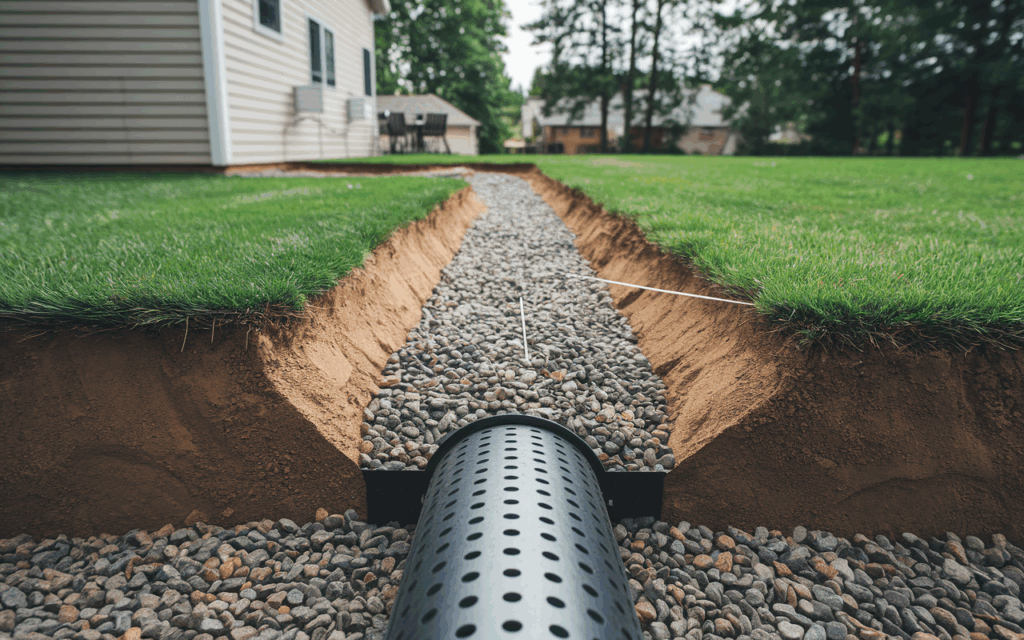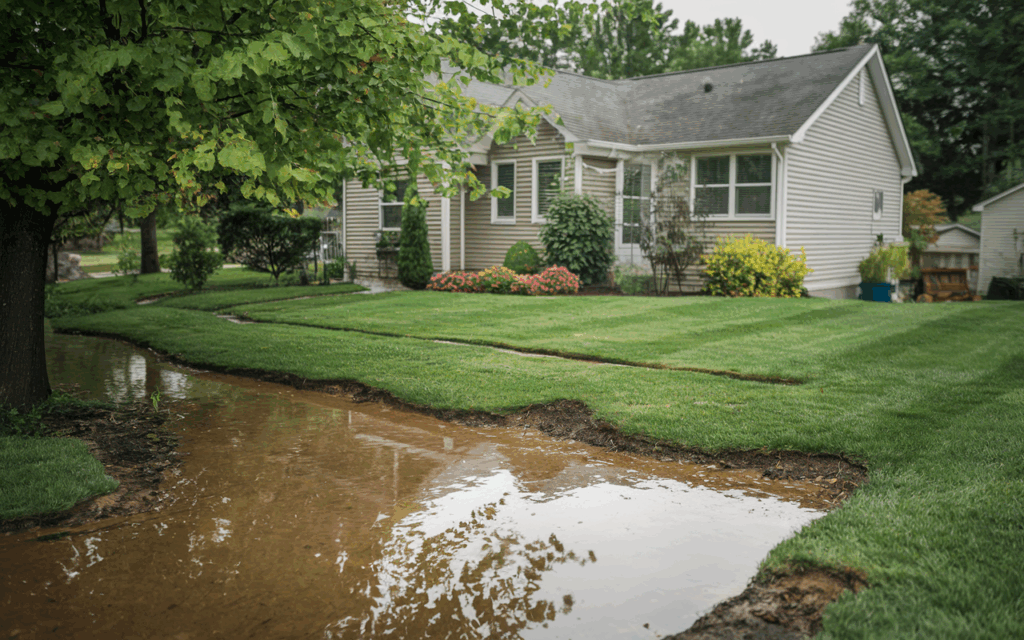
Water accumulation in your yard is more than just an inconvenience—it can lead to a range of costly and hazardous issues, including erosion, mold, and foundation damage. For homeowners in Indiana, where seasonal rainfall and snowmelt are part of life, managing water efficiently is critical. One of the most effective solutions for controlling excess water is the French drain. This simple yet powerful system can make a significant difference in keeping your property dry and structurally sound.
What Is a French Drain?
A French drain is a trench-based drainage solution designed to redirect surface water and groundwater away from problem areas. It typically consists of a sloped trench filled with gravel and a perforated pipe that collects and transports water to a designated drainage area, such as a dry well, storm sewer, or a lower part of the yard.
This system helps prevent water from pooling on the surface or saturating the soil around foundations and landscaping. French drains are particularly useful in yards that suffer from poor natural drainage or in locations where water runoff is a recurring issue.
Why French Drains Are Ideal for Indiana Homes
Indiana’s climate, with its frequent rainfall and occasional snowmelt, poses unique challenges for water management. French drains offer several benefits that make them particularly well-suited to the needs of Indiana homeowners:
- Efficient Water Redirection: Quickly channels water away from vulnerable areas.
- Foundation Protection: Reduces hydrostatic pressure on basement walls and slabs.
- Soil Stability: Prevents soil erosion and helps preserve landscaping.
- Minimal Surface Disruption: Installed below ground, preserving your yard’s appearance.
Whether you’re dealing with a soggy lawn, water pooling around your foundation, or a constantly damp basement, a French drain could be the long-term solution you need.
How French Drains Work
The effectiveness of a French drain lies in its design. Here’s a step-by-step look at how it functions:
- Collection: Water seeps into the gravel-filled trench through surface runoff or underground saturation.
- Drainage Pipe: A perforated pipe at the base of the trench collects the water and transports it away.
- Redirection: The water is carried to a safe discharge point, such as a drainage ditch, swale, or dry well.
This simple mechanism relies on gravity and the natural movement of water to protect your property from excess moisture. Proper slope and positioning are essential for the system to work effectively, which is why professional design and installation are highly recommended.
Common Signs You Might Need a French Drain

If you’re unsure whether your yard would benefit from a French drain, here are some red flags to watch for:
- Water is pooling in specific areas after rain
- Soggy or spongy ground, even days after precipitation
- Basement leaks or dampness near walls
- Cracks in the foundation or evidence of shifting soil
- Mildew smells or visible mold near the base of the home
These symptoms often indicate chronic water management issues that, left unchecked, can lead to extensive property damage and health concerns.
Professional Installation Matters
While DIY guides for French drains are widely available, this is not a one-size-fits-all project. Proper installation requires expertise in grading, drainage planning, soil types, and system placement. At Homeward Environmental, we bring years of experience in designing and installing drainage solutions that are custom-tailored to each property’s specific needs.
Our team will assess your property’s layout, water flow patterns, and soil conditions to determine the ideal placement and configuration for your French drain. We handle every step of the process—from trench excavation and pipe installation to backfilling and final grading—with precision and care.
Long-Term Benefits of a French Drain System
Investing in a French drain offers numerous advantages beyond immediate water control. These include:
- Reduced Maintenance: Less standing water means fewer yard problems and less frequent repairs.
- Improved Home Health: Lower risk of mold, mildew, and basement flooding.
- Increased Property Value: Prospective buyers value homes with sound drainage systems.
- Preserved Landscaping: Protects gardens, lawns, and hardscaping from water damage.
These long-term benefits make French drains a smart investment for any Indiana homeowner facing yard drainage concerns.
When to Act
If you’re experiencing any of the warning signs mentioned earlier, it’s important to act before the problem escalates. Water damage tends to get worse over time, and what begins as a minor inconvenience can quickly turn into a major structural issue or health hazard.
Contact us today to schedule a drainage consultation and find out if a French drain is the right solution for your yard. At Homeward Environmental, we provide expert guidance and professional installation to keep your property dry and protected year-round.
